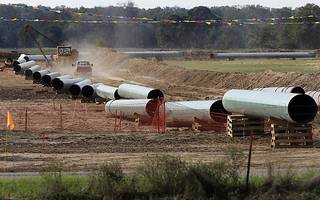Texas’ power grid operator said Monday that a federal plan for reducing carbon dioxide emissions would raise wholesale electricity rates as much as 20 percent.
It also could affect power reliability by forcing coal plant shutdowns.
In an analysis released Monday, the Electric Reliability Council of Texas said the timing and scale of the proposed reductions raise serious concerns.
ERCOT said about half of Texas’ coal-burning capacity might face retirement under the plan. The semi-independent state agency, which manages most of the state’s power network, also noted the challenges of integrating new wind and solar power into the state’s grid.
Fast-tracking the changes “will require major improvements to ERCOT’s transmission system, posing significant costs not considered in EPA’s Regulatory Impact Analysis,” the report said.
The grid manager stopped short of opposing the EPA plan. It instead called for more attention to electricity reliability issues.
Warren Lasher, ERCOT’s director of system planning, said including a “reliability safety valve” in the rule would allow flexibility in balancing emissions cuts and needed generation.
The EPA proposed the Clean Power Plan on June 2 as part of President Barack Obama’s climate change initiative. The proposal would require, in stages, a 38 percent overall reduction in Texas’ emissions from power production by 2030.
Reduction targets vary by state. Each state would choose its own strategy and could get credit for energy efficiency and no- or low-carbon sources such as wind and natural gas.
Details remain unclear, including how much credit Texas might get for its past progress toward cleaner energy. States that already have improved their electricity’s environmental footprint might have fewer remaining ways to achieve even deeper cuts.
Power supply
Coal, the most carbon-intensive electricity fuel, accounted for 37.2 percent of Texas power use in 2013. It was second to natural gas, at 40.5 percent.
Wind made up 9.9 percent. On March 26, 2014, wind supplied a record 29 percent of the state’s electricity.
Lasher said ERCOT used two study methods. One assumed that Texas emissions cuts would come in the most cost-effective way, similar to the EPA’s approach.
The other assumed a fee of $20 or $25 per ton of CO2 emitted from power plants. The fee is only theoretical, Lasher said, since neither the EPA nor Texas has suggested one.
Kate Zerrenner, a project manager with the Environmental Defense Fund, said other factors not included in ERCOT’s report could help meet the goal and hold down costs, such as faster action on energy efficiency and savings from reduced fossil-fuel-related water demands.
More details coming
Solar power on individual homes and buildings won’t require massive new transmission lines that utility-scale solar farms need, Zerrenner said.
“We are on a trajectory to meet this plan without a lot of new initiatives,” she said.
ERCOT plans to release a more detailed analysis of the CO2 proposal and other regulatory pressures on Texas’ power system on Dec. 16. Lasher said the agency released a shortened version now because public comment on the Clean Power Plan closes on Dec. 1.
ERCOT is responsible for monitoring electricity use, power plant operations and distribution lines, ordering generators to adjust production as conditions change. The agency also forecasts future electricity demands.
Follow Randy Lee Loftis on
Twitter at @RandyLeeLoftis.













To post a comment, log into your chosen social network and then add your comment below. Your comments are subject to our Terms of Service and the privacy policy and terms of service of your social network. If you do not want to comment with a social network, please consider writing a letter to the editor.